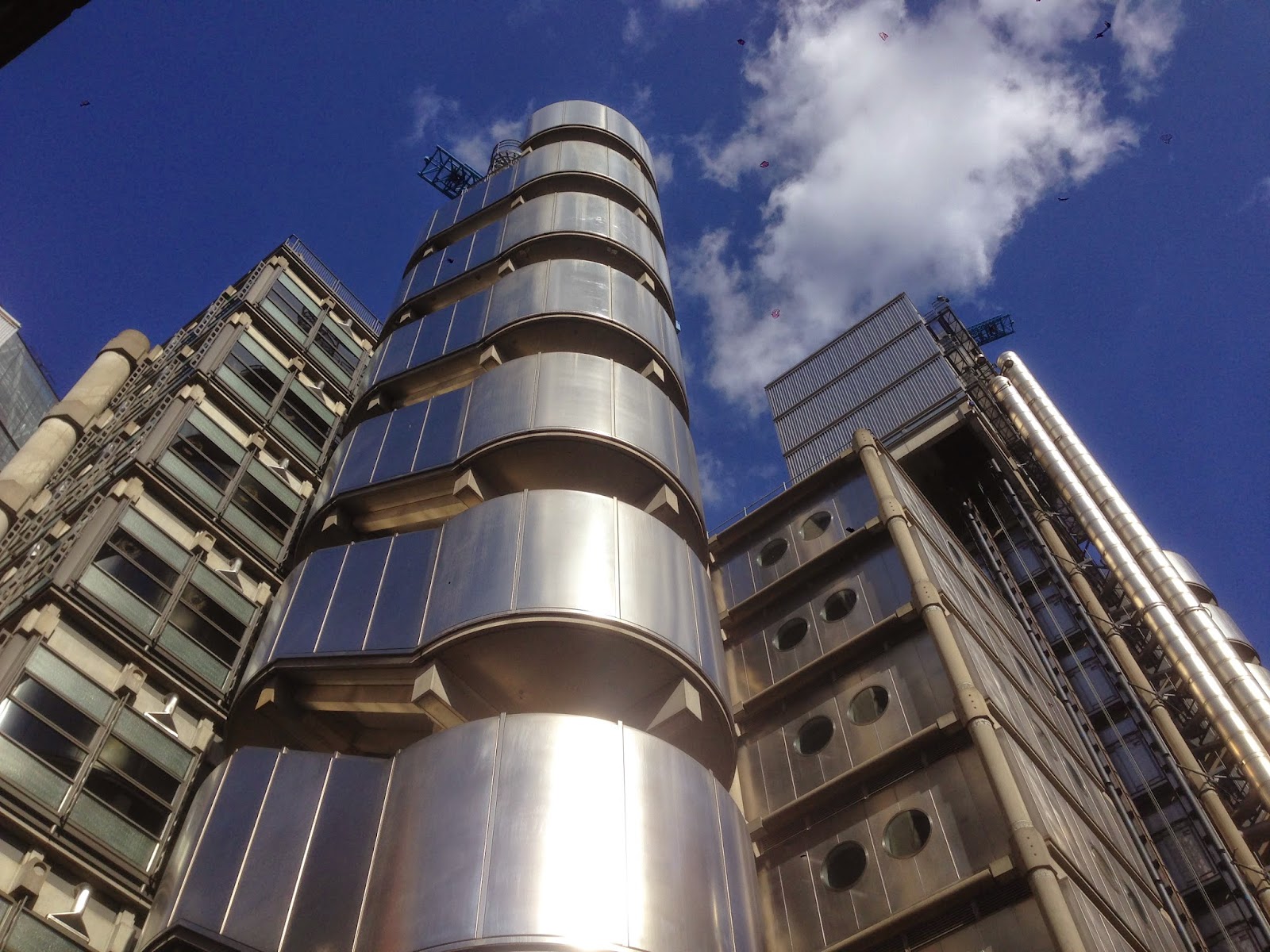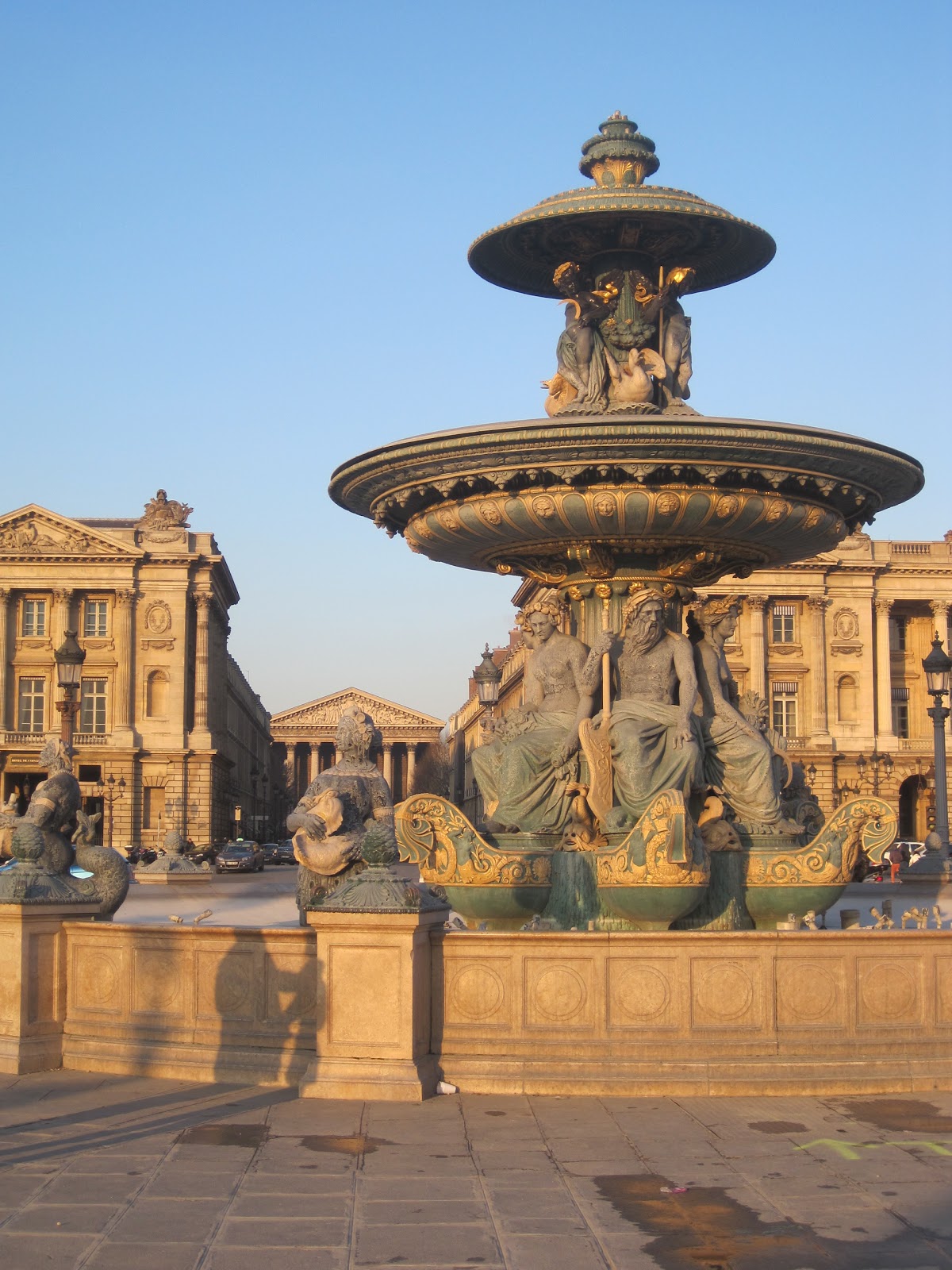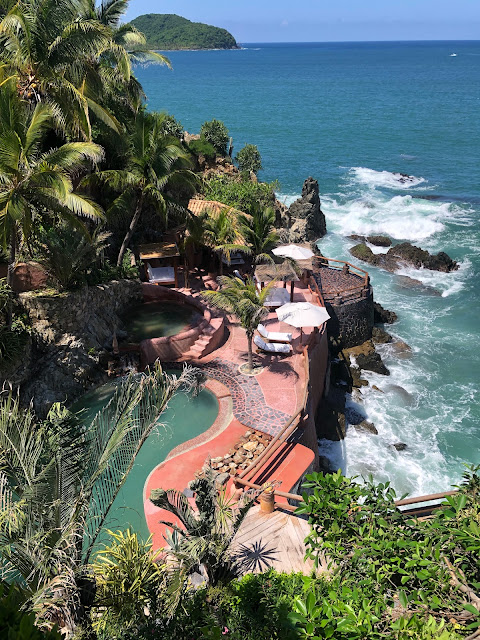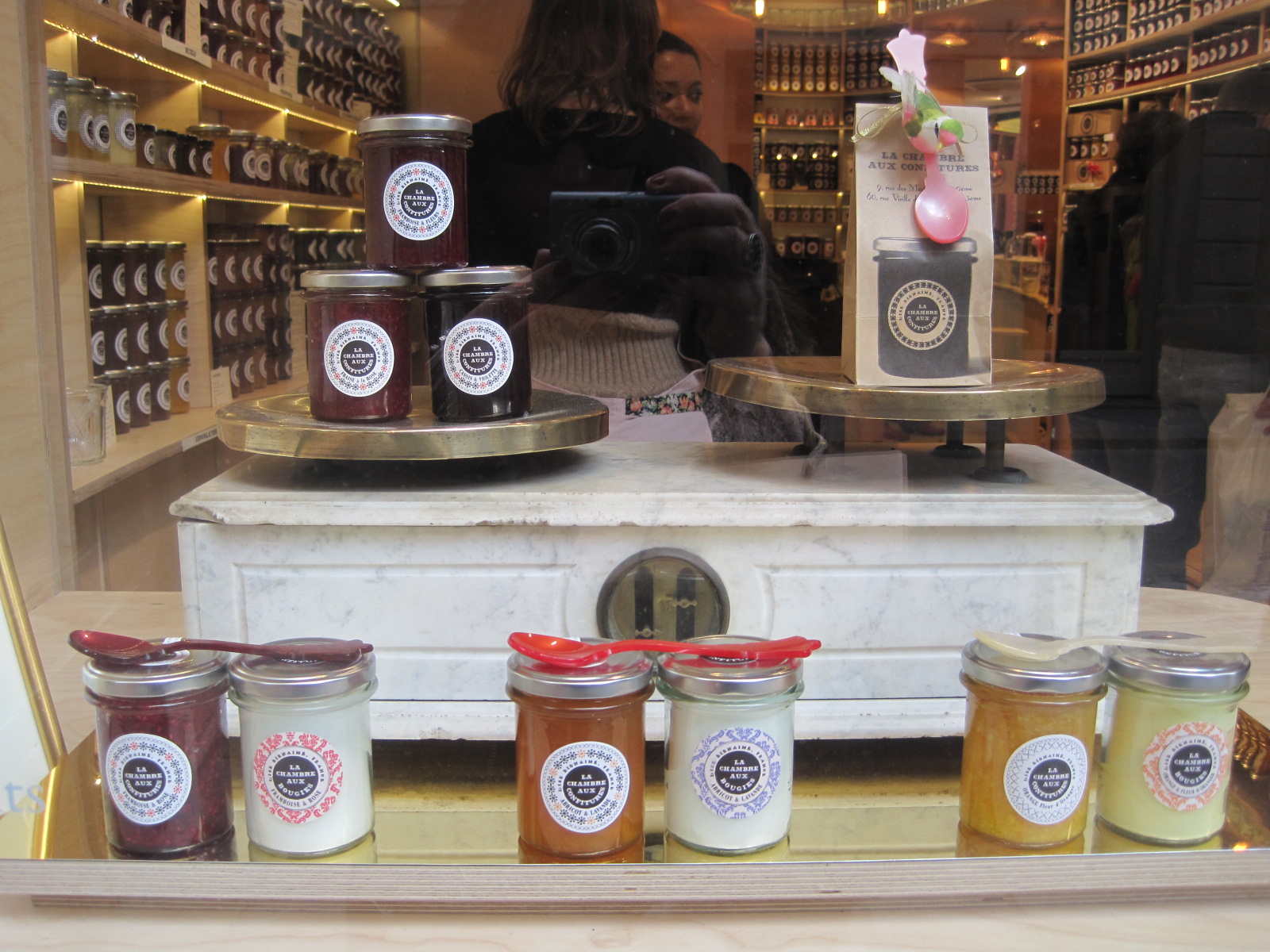Post-War Architecture in London - A Walk through the City
There a lot of fascinating post-war architecture in London, varying from social housing built in the 50's and 60's to iconic, contemporary, commercial buildings housing the headquarters of global capital. As an introduction to it all we took one of London Walks' tours starting at the the Barbican and ending in the City. I highly recommend looking at their repertoire of weekend tours as they have a rota of specialty walks on a very wide range of topics including history and architecture. We really enjoyed this walk and the guide Paule Cooze was excellent.
We started at the Golden Lane Estate purpose built in a Modernist style in the 1950's, see above. This was a warehouse district devastated by wartime bombing and it was rebuilt as social housing for (mainly single) city workers in relatively modest employment. Designed by Chamberlin, Powell and Bon who went on to design the next-door Barbican, this was a radical departure from the existing buildings in the area. The building emphasized glass, light and communal facilities including a roof garden, swimming pool and tennis courts.
From here we headed to the Barbican,which, like Marmite, you either love or hate, see above and below. I'm a lover and this is somewhere I would love to rent a flat. Yes, there is a great deal of concrete, this is after all a "Brutalist building but it's so functional, with lots of glass, gardens, ponds, covered walkways and communal, inward looking public spaces. It's wonderfully quiet for the center of the city and it has the amenities of a fantastic cultural center and the Museum of London within the development.
We were astonished to find that on a modern architecture tour ,we were the only people who liked the place, amazing! Clearly there are lots of people who feel this way, because flats are now extremely expensive and highly prized.
 As we left the Barbican we walked out past the London Museum on an elevated walkway. Apparently these walkways were prevalent several decades ago and were seen to reduce traffic accidents by separation the street level below from the pedestrians above. However, this led to a lot of climbing up and down and reduced the life a ground level.
As we left the Barbican we walked out past the London Museum on an elevated walkway. Apparently these walkways were prevalent several decades ago and were seen to reduce traffic accidents by separation the street level below from the pedestrians above. However, this led to a lot of climbing up and down and reduced the life a ground level.
From here we saw mainly recent commercial buildings by superstar architects such as Norman Foster, Richard Rogers, Renzo Piano and Rafael Vinoly. The earliest of these buildings was Richard Roger's extraordinary building for Lloyds of London the Insurance brokerage, see the first photo above. As in the Pompidou Center much of the practical inner workings of the building are on the outside, including the lifts. Started in 1978 and completed in 1987 the building was designed in a modular form the building. It was intended to grow with the needs of the client but it is now Grade II listed, which limits the nature of any modifications.
We saw all those wonderful buildings with the ridiculous names The Gherkin, The Walkie Talkie, The Cheese Grater (above) and the Shard, or as D. likes to call it The Splinter! It's as if Londoners cut the grandeur and hauteur of these buildings right down to size through their ridiculous but apt nicknames. I have to say I'm very fond of the curvilineal quality of Norman Foster's work, I love the Gherkin (below) the new City Hall (near Tower Bridge above) and of course the successful covering on the Great Court at the British Museum.
Throughout the City are wonderful contrasts between old and new as you can see. However, not all modern buildings take a modernist form. The Police headquarters below was built in the 1960's in a traditional style.Across the road the more recent building )on the right of the tower) was require to fit in with the existing traditional streetscape, but the architect offset the window to give it a playful, modern sensibility.
Below is the back of the same building which looks quite different. Here it was curved to accommodated a protected plane tree.
London also had its post-modern moment which you can see a 1, Poultry. Who doesn't love some of these quirky British names?
You can see the colorful interior above and the extraordinary stripped exterior below. This site was originally going to house a building by the great Mies van der Rohe but a planning battle in the 1970's defeated the project and ultimately this is what we got instead.
Here is what it replaced (courtesy of Wikipedia) I love modern architecture but I see no improvement here.
The walk gave us a good sense for the changing eras of development, from residential estates built in the damaged areas after the war, to the move to build up, up, up. We will definitely be heading back to the Barbican which I'd like to see more of and we are planning to check out the walking tours in a new book London: The Architecture Guide which D. bought last week.
Tip: London Walks offers a frequent walker card which you can buy for £2 that give you £2 off all subsequent walks and more off their day trips. This is well worth it for anyone contemplating more than two of their walks. Fyi, i's valid for three months for residents and a month for visitors.
Here's the view down on the Gherkin from the fortieth floor of the Heron Tower. You can see this view from SushiSamba or the Duck and Waffle. Head to the bar to enjoy it without a reservation.
Here's the view down on the Gherkin from the fortieth floor of the Heron Tower. You can see this view from SushiSamba or the Duck and Waffle. Head to the bar to enjoy it without a reservation.













_-_geograph.org.uk_-_1229496.jpg)













Comments